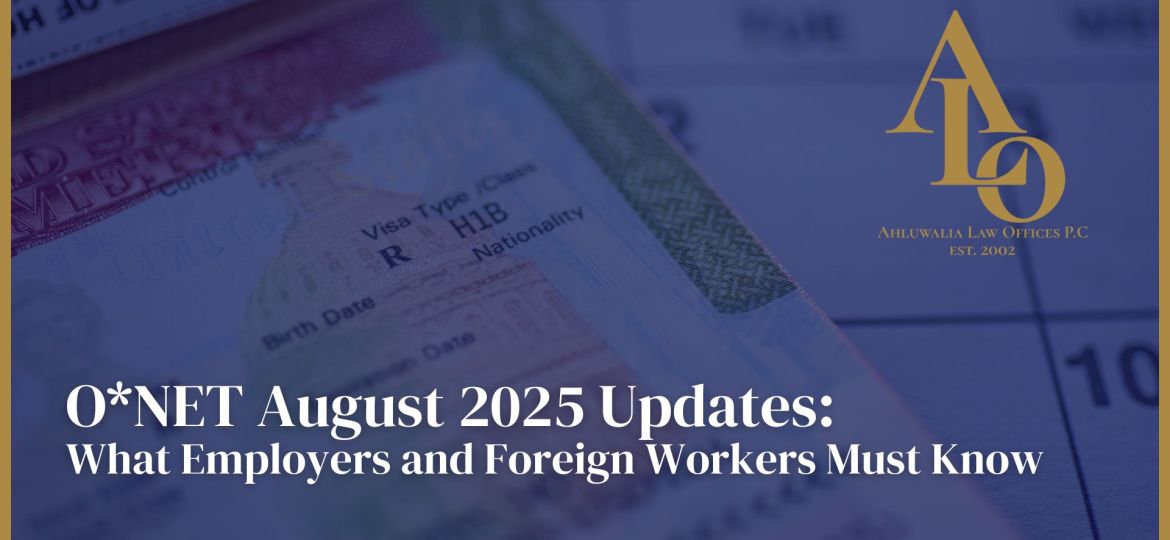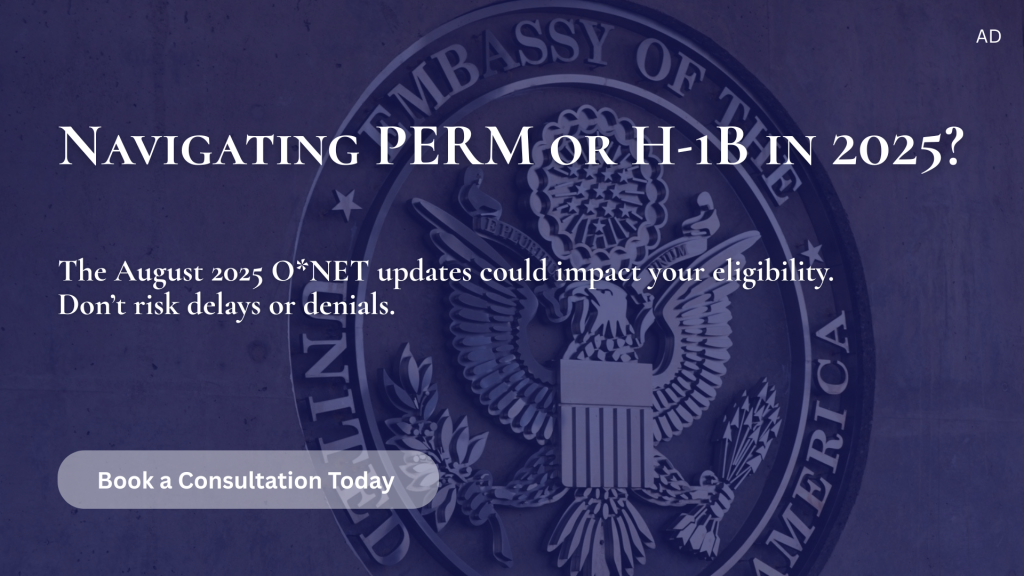
On August 26, 2025, the U.S. Department of Labor (DOL) released its latest update to the Occupational Information Network (O*NET). These updates carry direct consequences for employment-based immigration, particularly PERM labor certifications (ETA Form 9089) and H-1B visa petitions (Form I-129).
The O*NET program, which classifies nearly 1,000 occupations, is frequently referenced in determining prevailing wage levels and assessing whether a job qualifies as a “specialty occupation” for H-1B eligibility. The August 2025 update introduced two major changes:
- Job Zone adjustments for 78 occupations
- Detailed Work Activities revisions for 170 occupations
Key Job Zone Changes
Among the occupations affected:
- Upgraded to Job Zone 4: Acute Care Nurses (29-1141.01)
- Downgraded to Job Zone 1 or 2: Hosts/Hostesses, Concierges, Boilermakers, Stonemasons, Pipelayers, Wastewater Treatment Operators, and Computer Tool Programmers
These shifts matter because Job Zones reflect the training, education, and experience typically required for an occupation. For example, Job Zone 4 occupations generally align with bachelor’s degree requirements, strengthening eligibility for H-1B filings. In contrast, downgrades to Job Zone 2 may foreclose H-1B sponsorship since those roles often require less than a bachelor’s degree.
Implications for PERM Filings
For PERM labor certifications, employers sponsoring workers in downgraded Job Zone 2 occupations must exercise caution. If an employer requires more than one year of experience or education beyond an associate’s degree, it must answer “Yes” to Question G.9 on ETA Form 9089 and provide a business necessity justification. Because responses are limited to 1,500 characters, denials may result if explanations are insufficient.
Additionally, the DOL confirmed that the O*NET version in effect at the time the prevailing wage determination is issued controls the PERM process. Employers should therefore retain copies of the relevant O*NET version for their records.
Implications for H-1B Petitions
The H-1B program requires that the offered position qualify as a specialty occupation under federal regulations (8 C.F.R. §214.2(h)(4)(iii)(A)). A position downgraded to Job Zone 2 may not meet this threshold, increasing the risk of denial. Conversely, an upgrade from Job Zone 3 to Job Zone 4 can strengthen an H-1B petition by aligning more closely with the statutory bachelor’s degree requirement.
Employers and foreign nationals should also consult the Occupational Outlook Handbook (OOH) published by the Bureau of Labor Statistics. Even when O*NET downgrades a role, OOH descriptions may provide evidence that a bachelor’s degree is typically required, which can be critical in overcoming U.S. Citizenship and Immigration Services (USCIS) scrutiny.
Next Steps for Employers and Visa Holders
- Review whether your sponsored occupation was affected in the August 2025 O*NET update.
- For PERM, ensure that your job requirements align with the controlling O*NET version and prepare robust business necessity justifications when required.
- For H-1B and related filings (H-1B1, E-3), consider whether Job Zone changes strengthen or weaken your eligibility arguments.
- Keep copies of O*NET and OOH documentation at the time of filing to support your case in the event of agency challenges.


